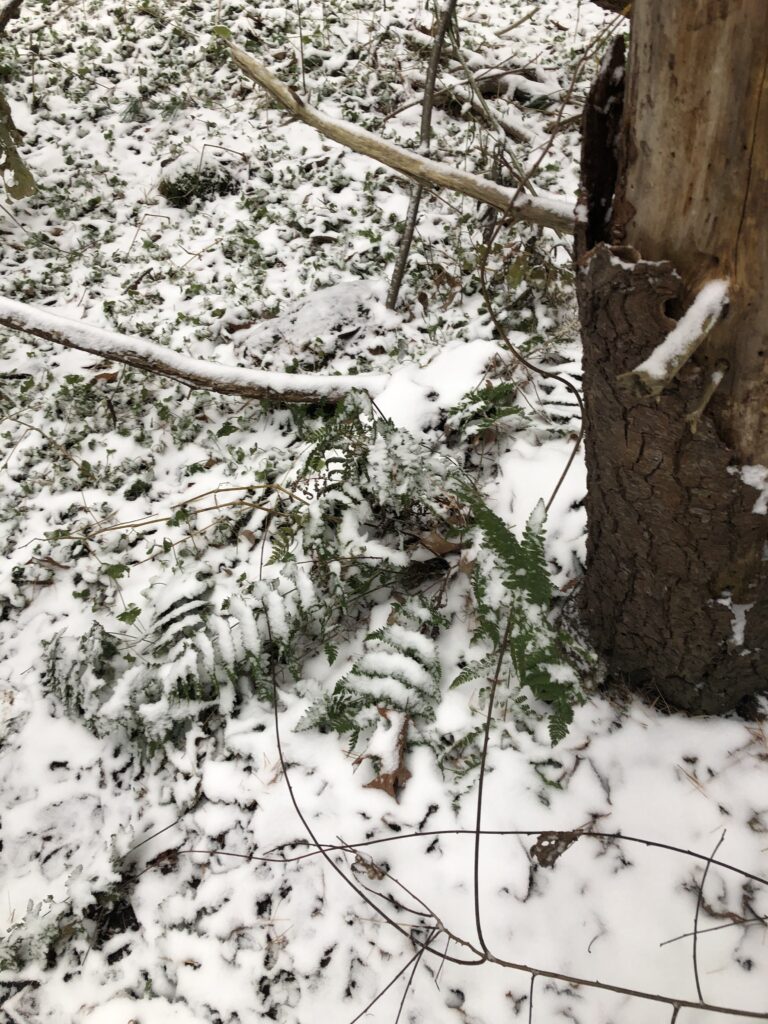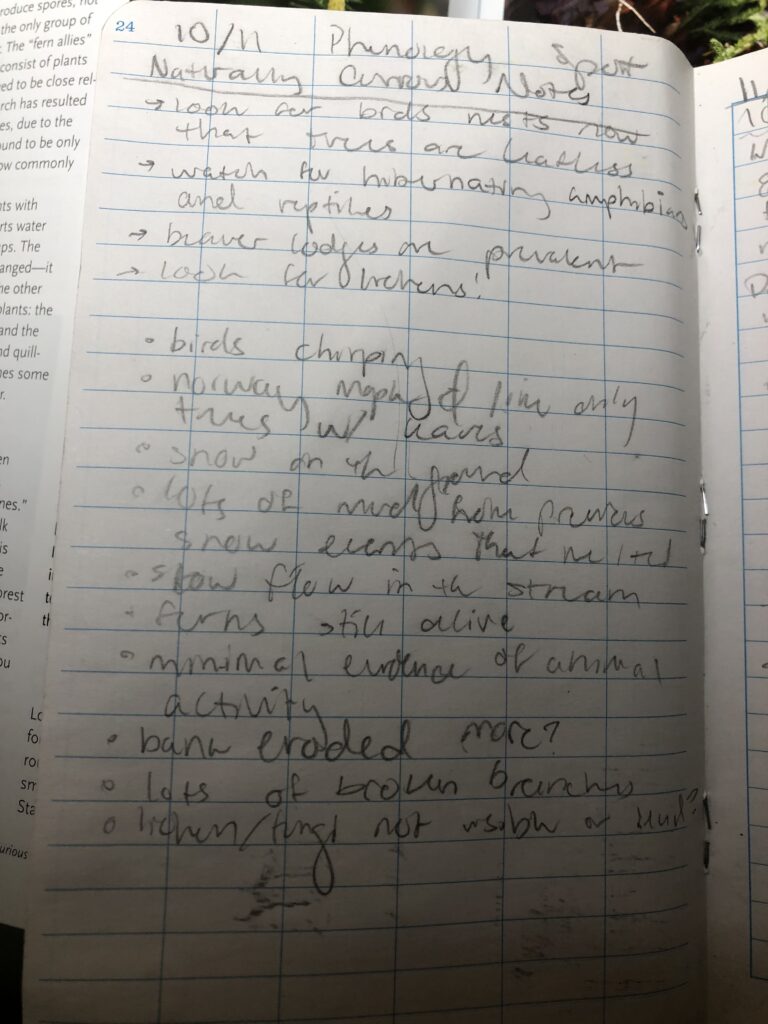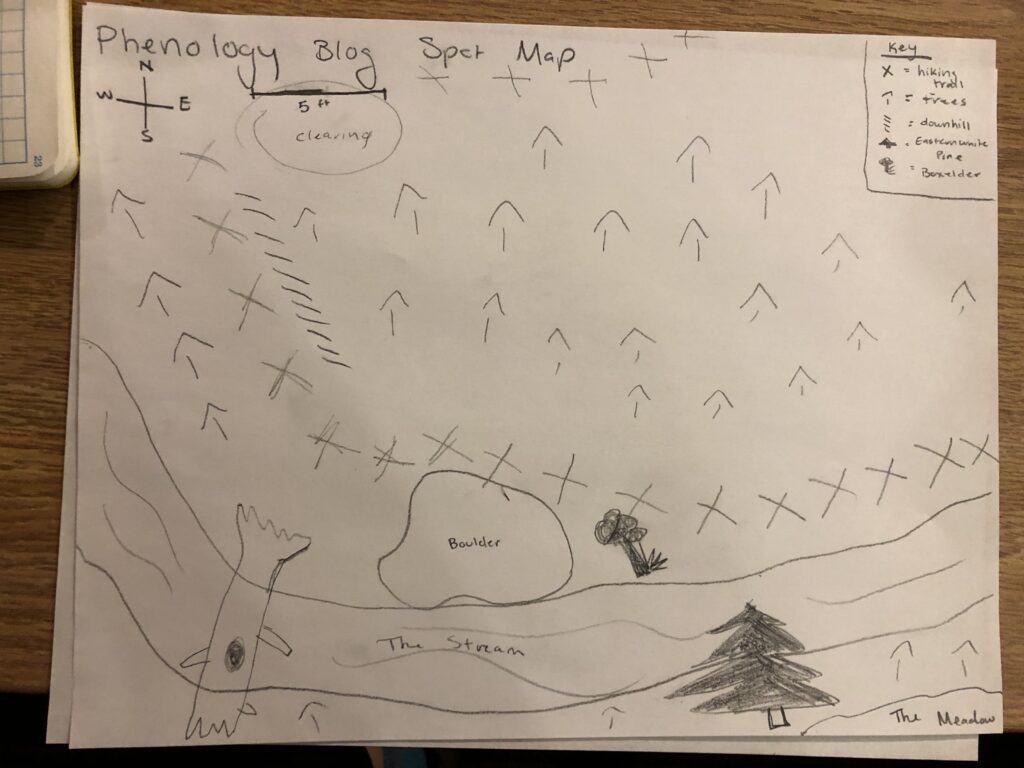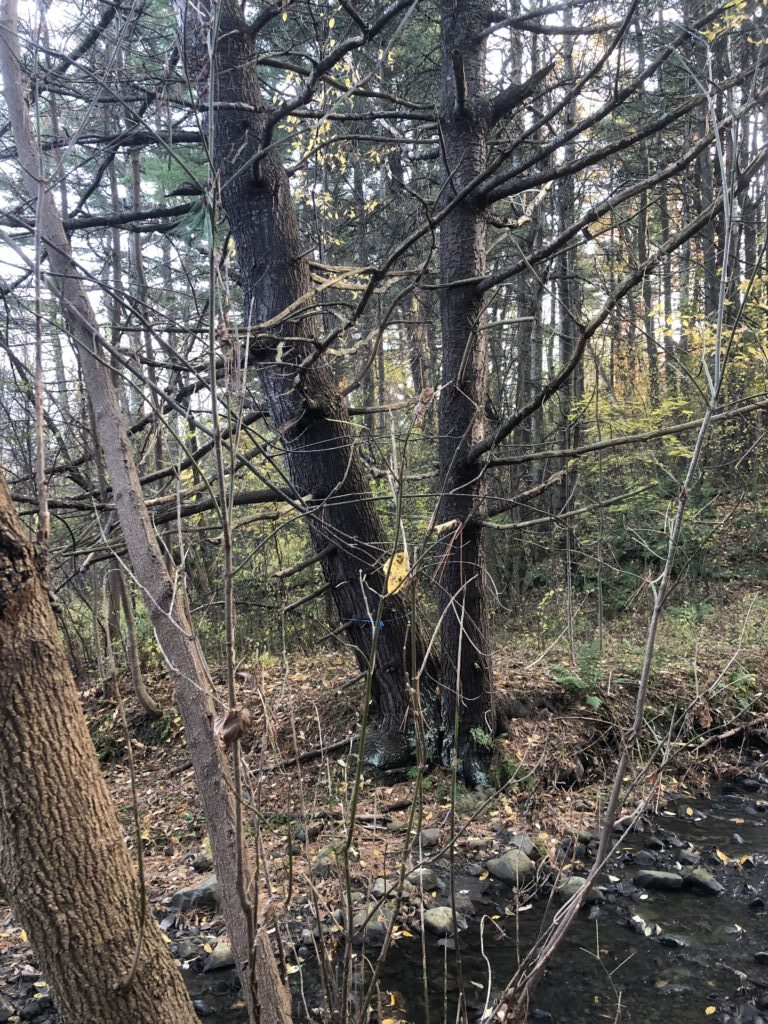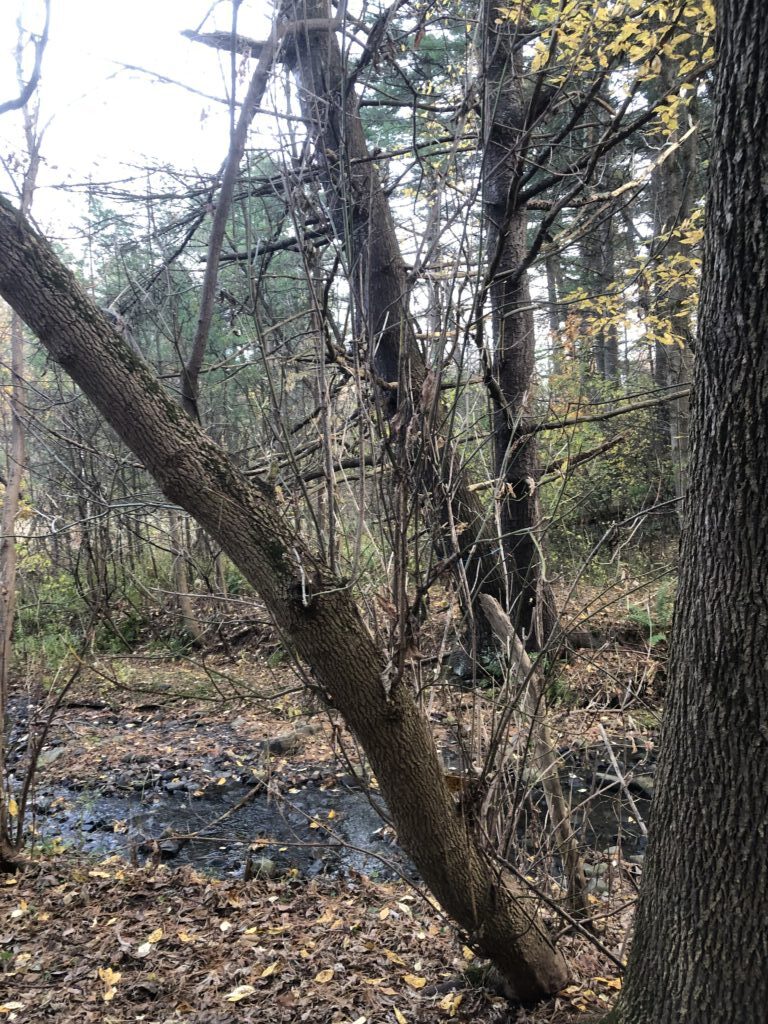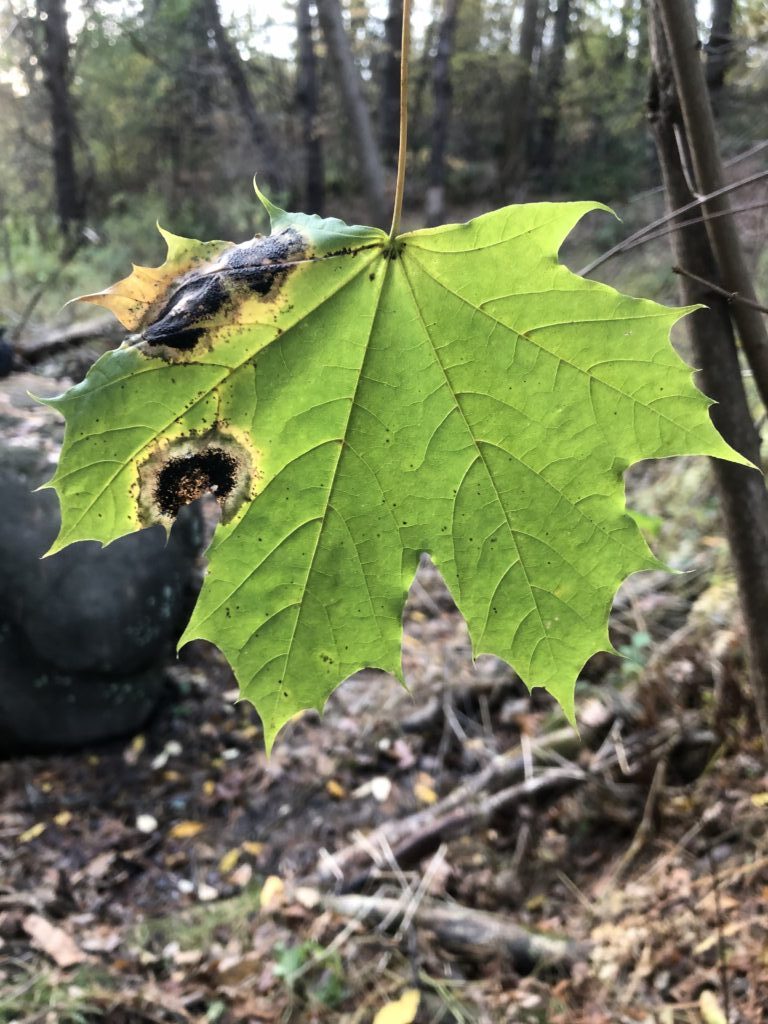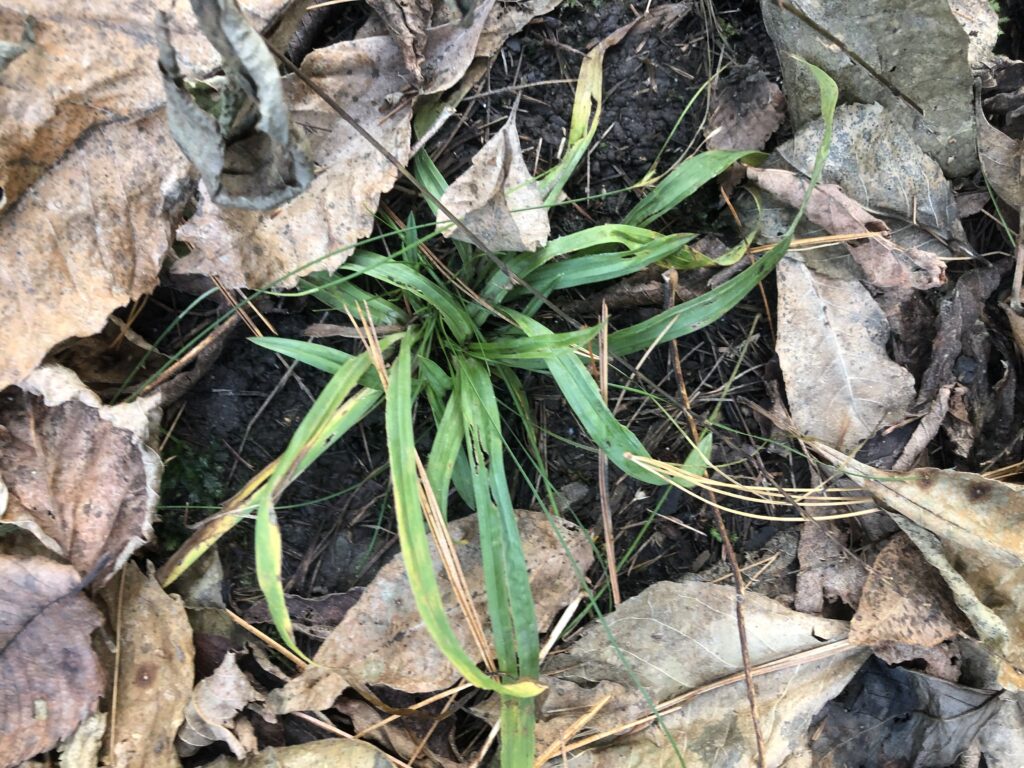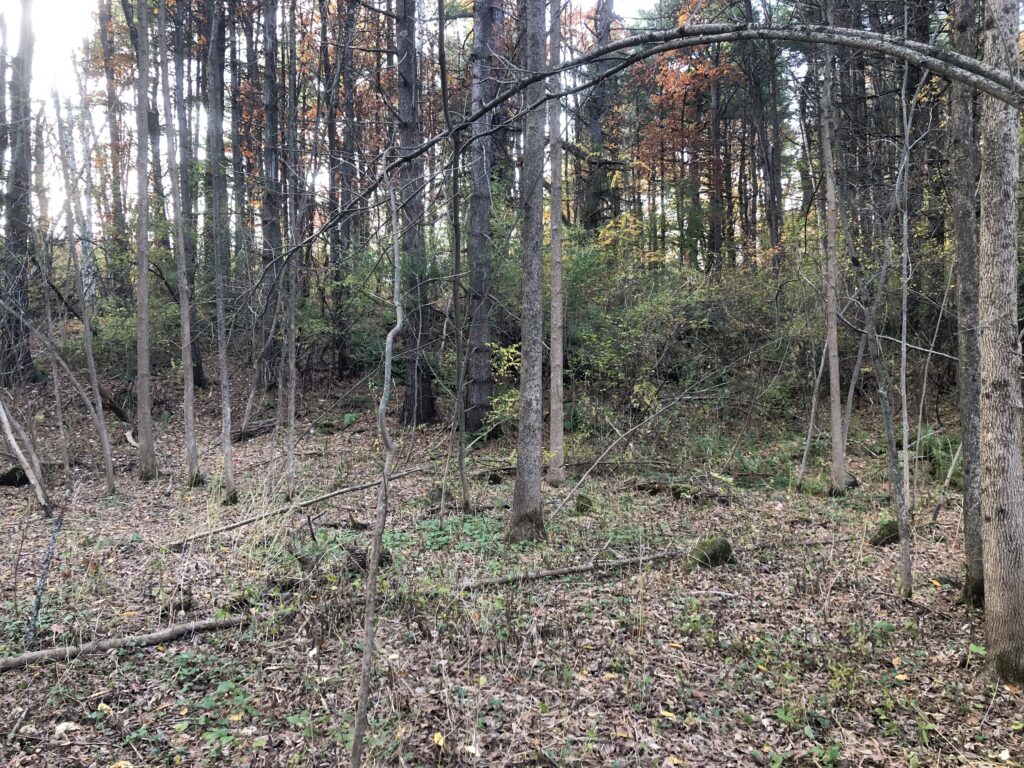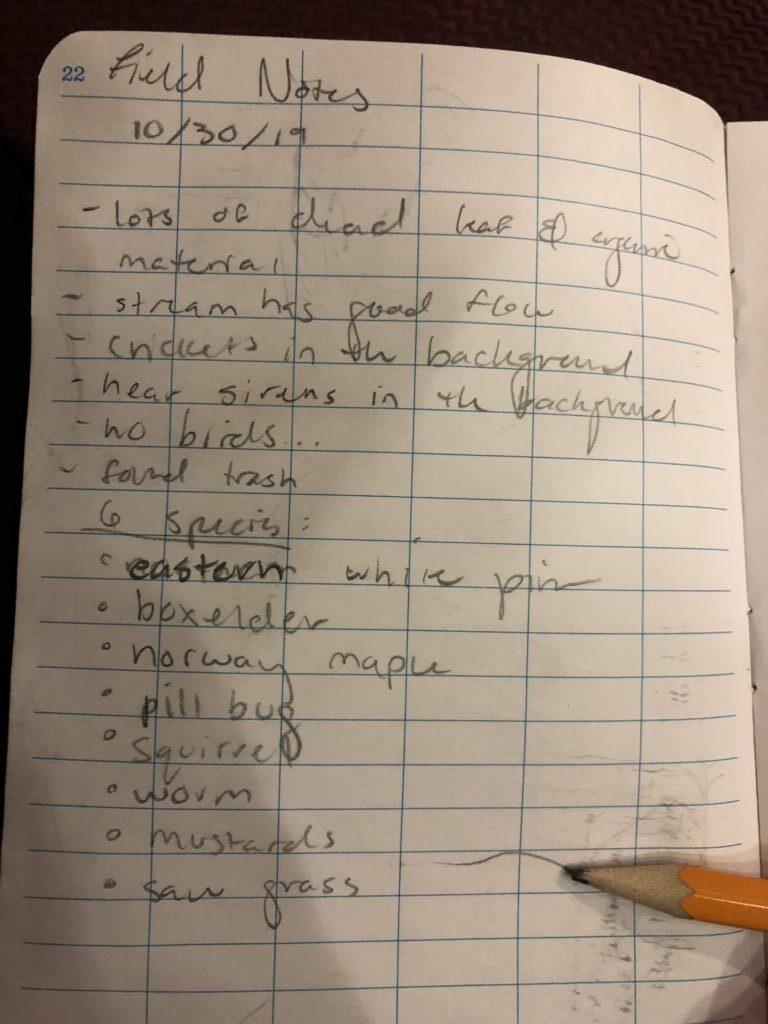
As my Phenology Blog spot has changed with the seasons, my relationship with it has as well. This spot started as a sunny spot in the woods, off the main trail and along a quaint stream. It reminded me of the woods back home, and it had a very comforting, relaxing nature about it. Now, in early November, as the trees have lost all their leaves and the ground is covered in snow, this place feels a little more foreign to me. Snow doesn’t usually fall where I’m from until December, and this little spot in the woods – blanketed in white – feels like a winter wonderland. I have always loved the quiet that snow brings to a forest, and I was glad to have an opportunity to observe that so soon! As the woods change with the seasons, so do my favorite aspects of the spot.
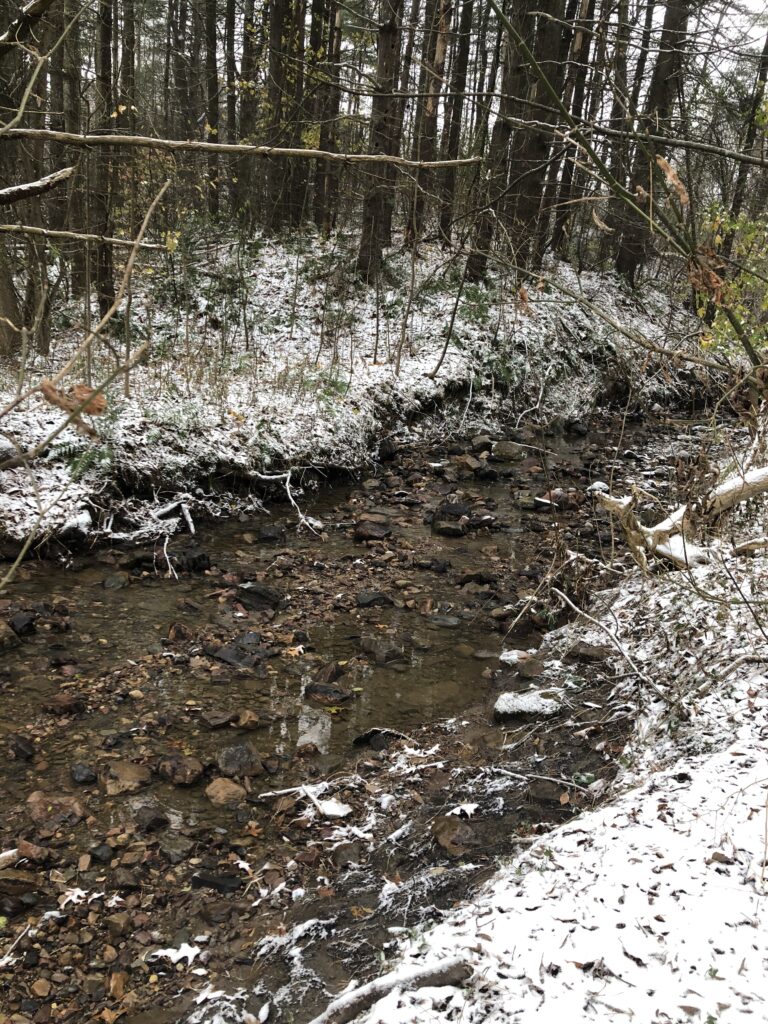
My blog spot is a little haven off the main hiking trail, this trail is a part of Centennial Woods, and Centennial Woods is a forest on the outskirts of UVM’s campus. To escape from res hall life, or bad grundle food, all it takes is a 15 minute leisurely stroll from my room to arrive at my spot. This blog spot has really become a part of my “escape” time, and is a very nice way to reconnect with nature when it’s hard to find the time. It is just a little piece of the woods, yet it has so much to offer.

In the grand scope of history, this little spot in Centennial Woods was not always the quiet, forested refuge it is now. Centennial woods, in Vermont’s early days of being settled, was clear cut and being used as crop and grazing fields. In the mid to late 1800s, many farms in this area were abandoned, and it is likely that the oldest trees in the forest started to grow in. It wasn’t until the 1970s that UVM designated the woods as a natural area. This history is clear in the youth of the trees in the forest. This is interesting to me because I come from an area not suitable for farming, and so to see this rocky history of the land is a new perspective for me.
